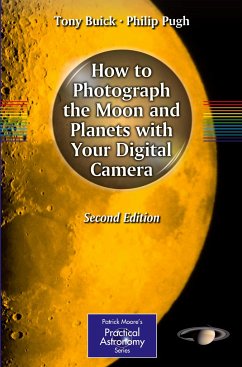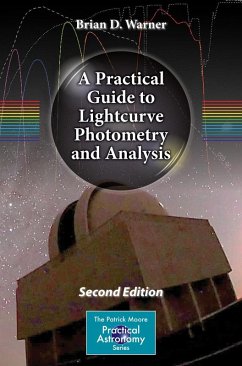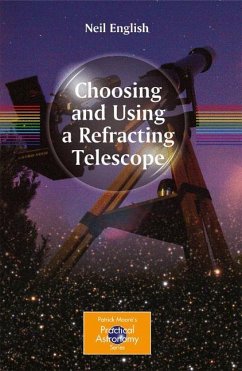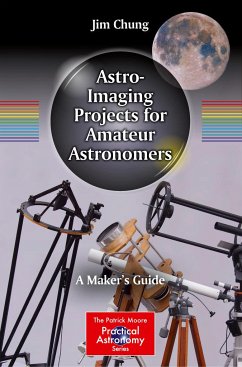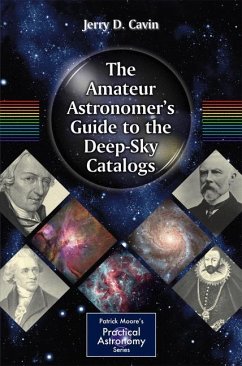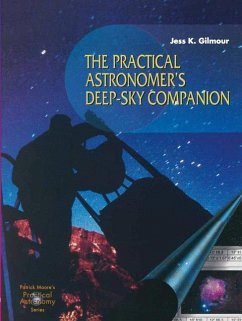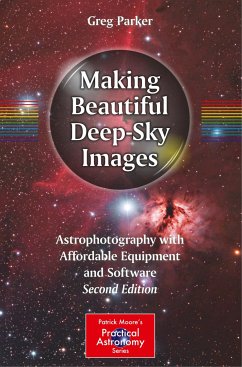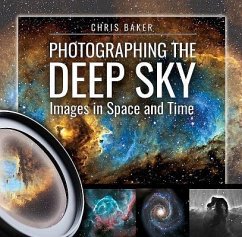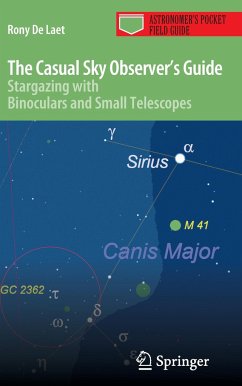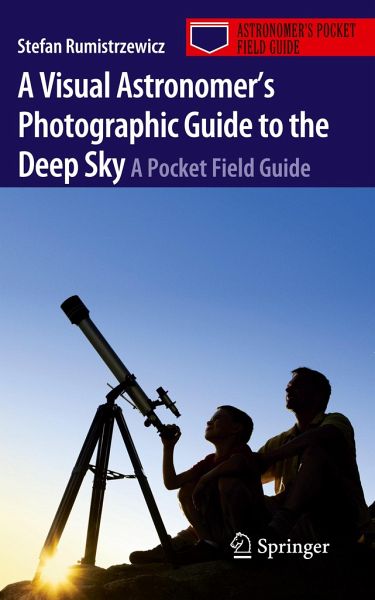
A Visual Astronomer's Photographic Guide to the Deep Sky
A Pocket Field Guide

PAYBACK Punkte
16 °P sammeln!
This book is meant for observers who see a deep-sky object - either by star-hopping or by using a Go-To telescope - but do not observe it in detail because they don't know what to look for. It provides photographic images of all the objects discussed... not just images, but images that look exactly like the visual view through the eyepiece of telescopes of various apertures.
Visually, deep-sky objects almost always look quite unlike the usual CCD images published in astronomical guides. The human eye doesn't see color at such low light levels, and the contrast of extended objects (such as nebulae and galaxies) is completely different.
The author lives in a less-than ideal location for visual observing, with the city of London only about twenty miles to the south. He uses this to advantage, and amateur astronomers will find this book invaluable because it shows them what they will actually see from a typical suburban location, not a rare view under perfect skies.
Visually, deep-sky objects almost always look quite unlike the usual CCD images published in astronomical guides. The human eye doesn't see color at such low light levels, and the contrast of extended objects (such as nebulae and galaxies) is completely different.
The author lives in a less-than ideal location for visual observing, with the city of London only about twenty miles to the south. He uses this to advantage, and amateur astronomers will find this book invaluable because it shows them what they will actually see from a typical suburban location, not a rare view under perfect skies.
Over the last 15 years or so there has been a huge increase in the popularity of astrophotography with the advent of digital SLR cameras and CCD imagers. These have enabled astronomers to take many images and, indeed, check images as they scan the skies. Processing techniques using computer software have also made 'developing' these images more accessible to those of us who are 'chemically challenged!' And let's face it - some of the pictures you see these days in magazines, books, and on popular web forums are, frankly, amazing! So, why bother looking through the eyepiece you ask? Well, for one thing, setting up the equipment is quicker. You just take your 'scope out of the garage or, if you're lucky enough to own one, open the roof of your observatory, align the 'scope and off you go. If you have an equatorial mount, you'll still need to roughly polar align, but this really takes only a few moments. The 'imager' would most likely need to spend more time setting up. This would include very accurate polar alignment (for equatorial mounts), then finding a guide star using his or her finder, checking the software is functioning properly, and c- tinuous monitoring to make sure the alignment is absolutely precise throu- out the imaging run. That said, an imager with a snug 'obsy' at the end of the garden will have a quicker time setting up, but then again so will the 'visual' observer.





